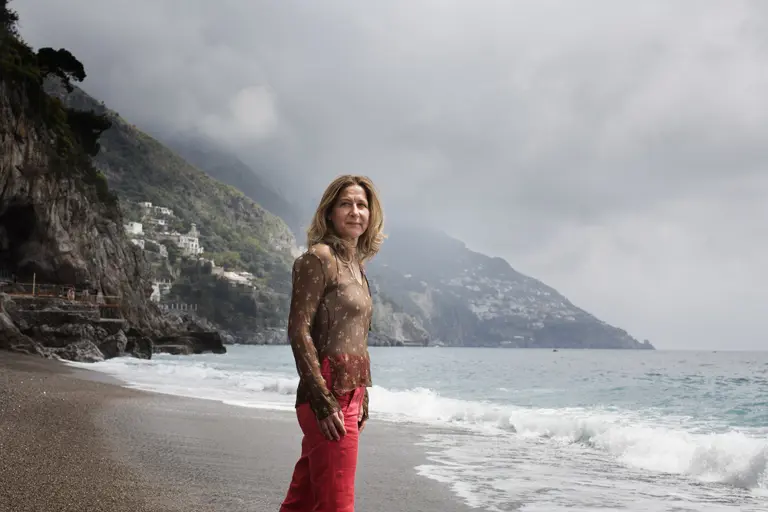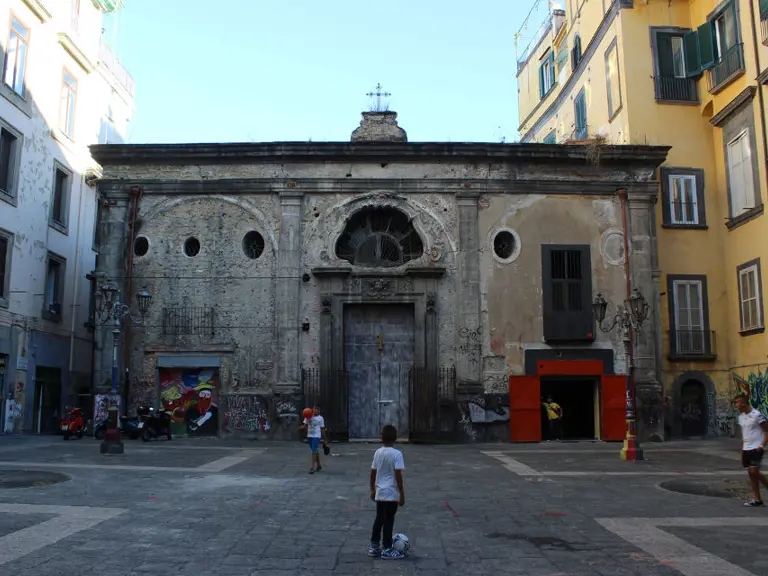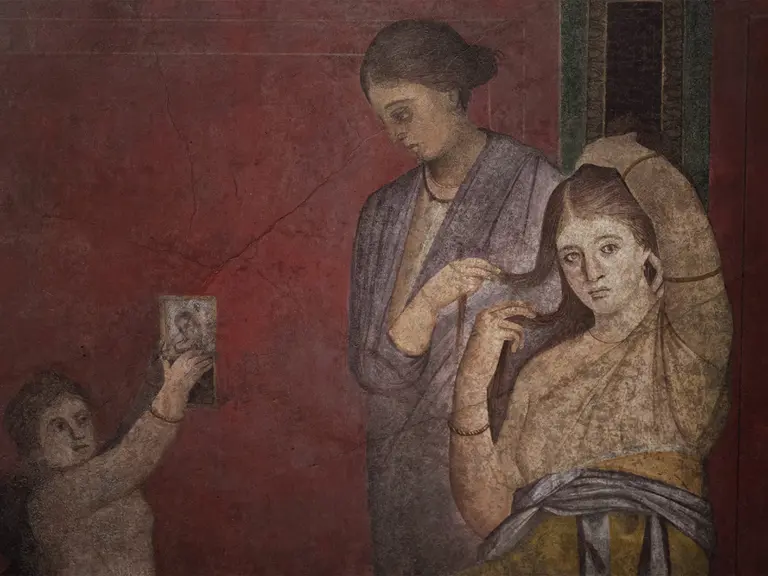WRIT ON WATER: AN INTERVIEW WITH BEATRICE PEDICONI
21.04.2015 ART & CULTURE
She was introduced to Antonio and Carla Sersale of Le Sirenuse by US gallery owner Marla Goldwasser, who sent them to see an installation of Pediconi’s that was being hosted by the prestigious Collezione Maramotti in Reggio Emilia. It was, says Carla Sersale, “a video that wrapped around four walls, immersing you in an amazing whirlwind of light and shadows”, and it so impressed the couple that they called Pediconi to ask her if she would be interested in creating an exclusive video work for Le Sirenuse, a work that guests would see as soon as they entered their rooms – as it would be running on a continuous loop on the in-suite televisions.
Beatrice visited Positano in March 2014 and, inspired by the town’s unique seascapes, created the 6 minute, 45 second work Untitled 2015 which was presented to press, art curators and guests at Le Sirenuse on 18 April. It exists in two versions; one silent, while the other – the one present in Le Sirenuse’s rooms – comes with a soundtrack by Italian opera house director and film score composer Alessio Vlad. The version posted above is a 36-second extract from the full work, which can only be seen in its entirety at Le Sirenuse.
The Sirenuse Journal sat down with Beatrice to ask her about her work, the inspiration she drew from Positano, and the craft that lies behind her visual alchemy.
Q: How do you define your work? Are you a video artist?
A: I’m reluctant to analyse my own work as an artist but I’m happy to talk about my technique. What I do is very simple: I paint on water. My work is about the ephemeral, about memory, about something that no longer exists, but which has occupied time. The medium I capture these works in – be it still photography or video – is secondary. So no, I don’t consider myself to be a video artist or a photographer. The video or photo is the sole documentation of a work that, at the time you see it, no longer exists.
Q: In a way what you do is a kind of performance…
A: Yes, but I also hesitate to define my work as performance art. The discipline I feel closest to is painting, because in common with painting on canvas there’s my gestuality, and the intimacy of the moment of creation. Performance artists have a direct relation with the public that is lacking in my work. If someone visits me in my studio, they’ll see the set-up, but I won’t work in front of them. To do this I’d need to be a different person, with a different character.
Q: There’s something reminiscent of action painting in your work, of Jackson Pollock’s drip technique…
A: Sure. Like Pollock and certain other action painters I work on a horizontal surface rather than a vertical canvas. Another thing we share is that there’s a manual element that obviously depends on you, the artist, but you’re never in complete control of the result.
Q: How did your visit to Positano inform this work?
A: As someone whose artistic medium is water, for me seeing Positano and Le Sirenuse for the first time was an illumination. The turquoise paint I use in the video is inspired by the marine setting. It’s the first time I’ve used colour as a sort of dye; normally I work mostly with black and white and the various brown and grey tints they take on as they dissolve in water, as their density is diluted. Another thing that struck me is the way Positano acts like a conch shell. From the terraces and balconies of Le Sirenuse you hear the waves breaking on the shore more clearly and intensely than when you’re down on the beach.
Q: Tell me a little bit about how you create your works.
A: I have various glass tanks that I use for my work; the one I have in New York is around a metre and a half long by a metre wide. I use paintbrushes sometimes to spread colours, at other times I use syringes to squeeze them through the water.
Q: It strikes me that there must be a lot of trial and error involved in getting the effect you want.
A: The search for materials is at the heart of my artistic practice. I’m like a chemist – of an instinctive rather than a scientific kind. Just to give you one example: the ‘moon’ that you see at the beginning of Untitled 2015, a moon that influences tides and moods, a moon that determines everything else that happens in the video – this was a drop of vitamin solution for plants. I work a lot with tempera paint but I also work with Indian ink and plenty of other media. The glitter you see near the start is bronze leaf which I cut up and threw into the water.
Q: And yet none of this effort and experimentation is visible to us…
A: My gestures are always ‘off-screen’. I like to take people into another world, in which they are entirely detached from reality. And in order to do this I prefer to create a certain mystery around how everything you see actually happens, like a conjuror.
Q: There are two versions of Untitled 2015, with and without music. Which is the ‘official’ one?
A: I often work with musicians, I’ve even designed an album cover for an American rock group. There’s a rhythm in the movement of the works I create that often fascinates musicians. In this case, it seemed to me that if there was any soundtrack at all it should be the natural sound of the sea. But I never impose rigid rules on what I do – my work is all about letting go, not trying to control things until the very end. So I was really happy when Antonio and Carla Sersale said they were keen for there to be a version of the video with musical accompaniment. I met Alessio Vlad, he really got into the project, and I’m flattered that such an important composer has done the score for one of my videos. The two versions – with music and without – are two entirely different experiences, neither of which takes away from the other. A few years ago, in 2011, I did a work called Red, which took its name from egg yolk – which in Italian is rosso d’uovo, literally ‘egg red’. It was a five-minute loop in which I explored how one’s perception of a visual work changes according to whether it’s accompanied by sound or not. So I’ve always been fascinated by this aspect.
Q: I imagine this is the first time your work has been shown ‘on television’. How do you feel about that?
A: I love the fact that my work will be visible in the rooms at the Sirenuse when guests arrive. This was Antonio Sersale’s idea: to bring contemporary art into the hotel without hammering a single nail into the wall. I get a bit tired, sometimes, of seeing works in empty white galleries. This is different. It’s not old school. My work’s light, delicate; it’s something that literally floats on water. So I like the fact that the work will be there in the hotel but at the same time not there, I like the discretion of it.
Pictures: © Roberto Salomone
Le Sirenuse Newsletter
Stay up to date
Sign up to our newsletter for regular updates on Amalfi Coast stories, events, recipes and glorious sunsets



